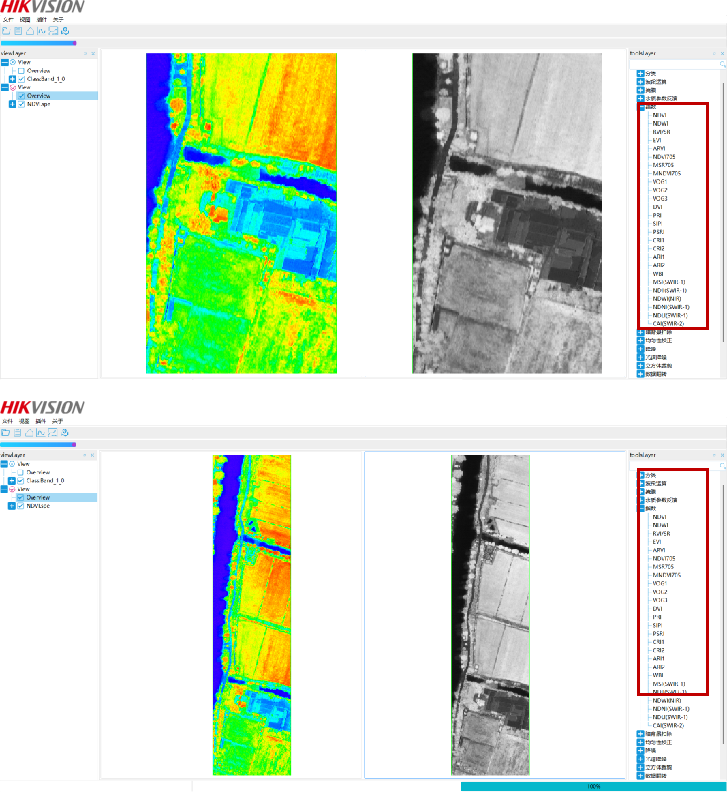
The data processing and analysis software配套 the hyperspectral mounting system comes pre-loaded with over 20 vegetation indices.
In remote sensing, the reflectance from different wavelength ranges is often combined to enhance vegetation characteristics, a process achieved through the calculation of Vegetation Indices (VIs). A Vegetation Index (VI) is used to quantitatively describe specific prominent features of vegetation.
While over 150 vegetation index models have been published in scientific literature, only a very limited number have undergone systematic practical validation. Based on the primary chemical components that significantly influence vegetation spectral characteristics—namely pigments, water, carbon, and nitrogen—the system incorporates seven major categories of highly practical vegetation indices. These are: Broadband Greenness, Narrowband Greenness, Light Use Efficiency, Canopy Nitrogen, Dryness or Carbon Decline, Leaf Pigments, and Canopy Water Content.
These indices provide straightforward metrics for assessing various vegetation properties, including: the quantity and vigor of green vegetation, chlorophyll content, leaf surface canopy characteristics, leaf clustering, canopy structure, the efficiency of photosynthetic light utilization, the relative nitrogen content within the vegetation canopy, estimating carbon content related to cellulose and lignin in a dry state, measuring stress-related pigments, and determining canopy water content.







